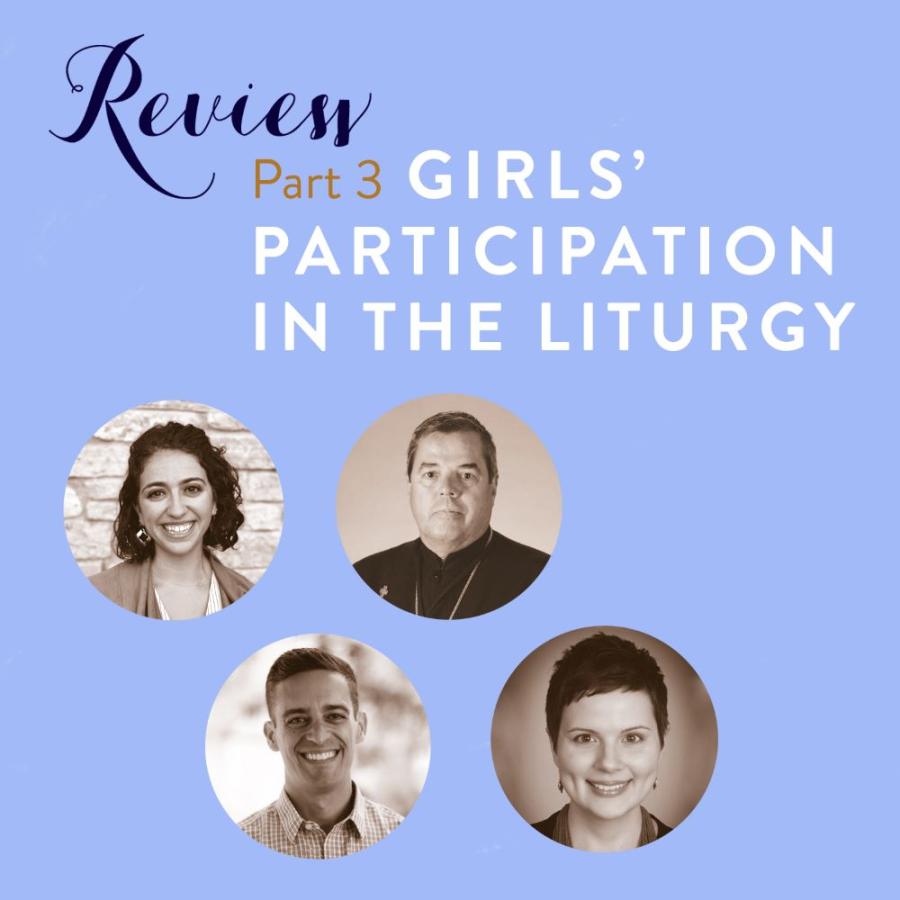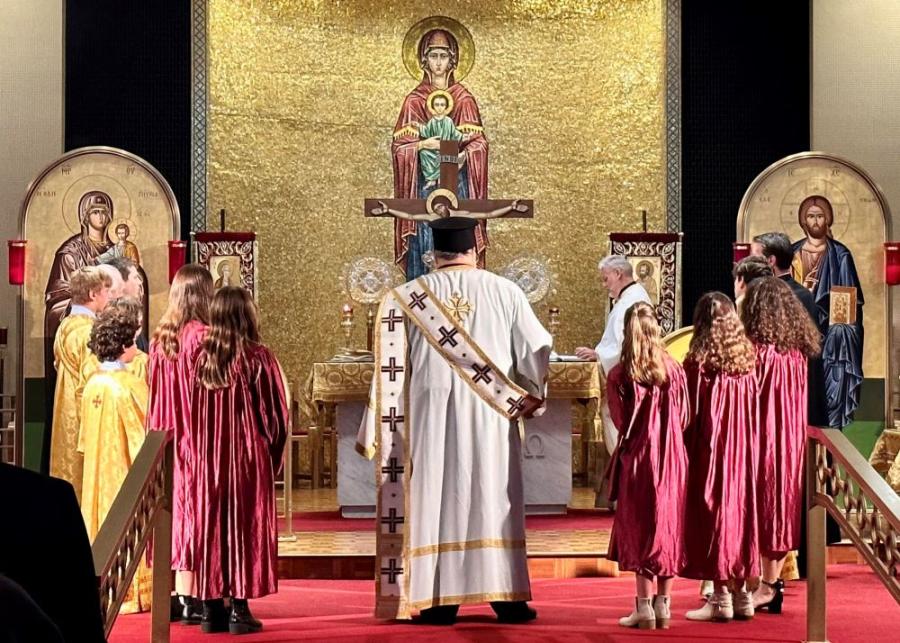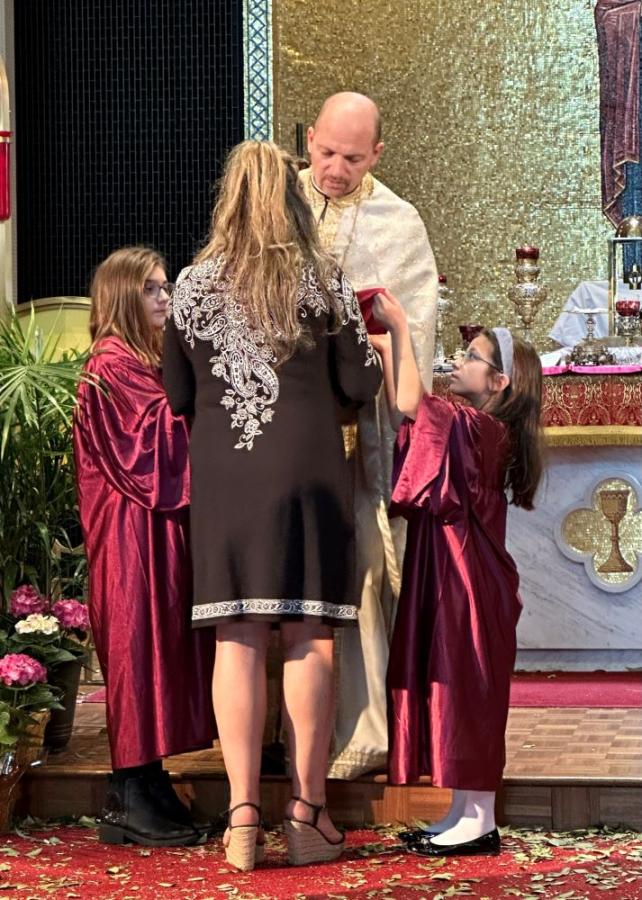
Axia has been working with St. Phoebe Center over the last year to create an online series to discuss the possibilities for a parish in creating a program for girls (and boys) to participate in the liturgy. A few weeks ago, we held Part 3, on January 28th.
The moderator was Dr. Teva Regule, who started by summarizing the first two events, a webinar and a panel discussion. For those of you who are not familiar with Dr. Regule’s work: she is a well-known Orthodox scholar, not just in her academic area of liturgics but as an active leader and founder of many youth and women’s organizations. She was the one who led the original webinar on the subject, about how some of our American parishes are emulating some of the practices that are already in use in the Patriarchate of Antioch, actively including young people in the liturgy as a means of deepening their knowledge and understanding of our faith. She not only told us what they are already doing, but gave us an outline of how to do it, in case we also want to go that route in our own parishes.
What else did I learn? Liturgy–the primary way we all experience, understand, express and transmit the faith–is a powerful ritual but often inaccessible or unrelatable, particularly to our youngest parishioners. Reading and listening during the liturgy serve as important ways to connect to the faith, but these modes of learning can often fall short in creating a lived experience of Christ. An active experiential approach to the liturgy can change that. Dr. Regule showed us how the Church of Antioch’s practice of having both girls and boys who can serve, read, be vested, guard the doors, and hold the bread for distribution.
As a result, a number of parishes around the country have put Liturgical Service Programs in place. Anna Kallis, who earned an M.Div. and is a presvytera, helms a program for girls which has expanded both in size and scope over the last few years, at the direction of their bishop, Metropolitan Nathanael of Chicago. Over time, they expanded the Lenten Myrrhbearers’ roles to include a wide variety of educational and liturgical duties–and the joy in the photos as they go about those tasks has spread throughout their parish. Anna pointed out that they did a lot of education to bring the parish along with them, and have received a lot of positive feedback.
Kristina Baktis, a licensed art therapist and board member of St. Phoebe Center, has started liturgical programs for girls in at least three different parishes, told us her philosophy is “Just start, even before everything is perfect.” One of the results of her most recent program in New Jersey has been that the children themselves are spreading what they are learning among themselves, and the parish is finding their joy infectious and energizing.
Dr. Andrew Nosal is a marine biologist and professor of biology who has participated in Project SOW (Science and Orthodoxy around the World), in the Evolution and Environment working group. He spoke as a parent of a daughter who participates in a liturgical program in their parish. He noted how important it is for our girls–all our children, in fact–to feel important and needed in their church life, and to have the chance to be role models, and to take on responsibility and be able to learn by doing. He attested that the program energized not only his own worship as a parent but that of the parish as a whole.


Fr. Peter Baktis, D.Min., a former military chaplain and current parish priest, started by clarifying terms because, as he said, “words matter.” The sanctuary is the area behind the iconostasis, while the altar is the table where only priests and bishops are allowed to stand. This is important because when girls or boys (or anyone else) go through the door of the iconostasis, they are entering the sanctuary, not standing at the altar. As a pastor, he also pointed out that it is important to bring everyone into the service as an organic whole. In his experience, he has seen how energizing the young people energizes the whole parish, which means that those people then take that energy out into the world with them as evangelists.
Girls and boys and girls in these parishes are reading the hours or the Epistle, holding icons and candles during the Gospel reading and the Great Entrance. They are making bread, making the offerings, and holding the bread baskets. There is a huge benefit to adults as well. They are key to this kind of program, as they must learn enough about the Liturgy that they can prepare the children for their roles, explain why they are doing what they are doing, be prepared to give them their cues, and set a tone of reverence. When the program is done in a prayerful and glorified way, the entire parish gets to experience the potential of the liturgy as a participatory encounter. The children (and their parents!) become knowledgeable of Orthodoxy, excited to serve, and girls (and everyone around them) see themselves as valued in their gifts and spirit, to that of their brothers.
We thank all the participants for bringing some of the joy and energy of these programs to our event. We have had a request to consider continuing the series with a part 4. If that’s something that would interest you, please let Axia know!


